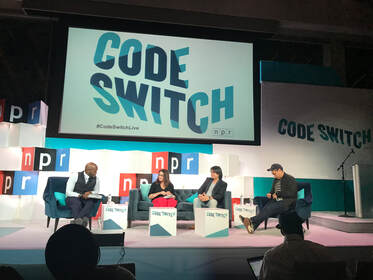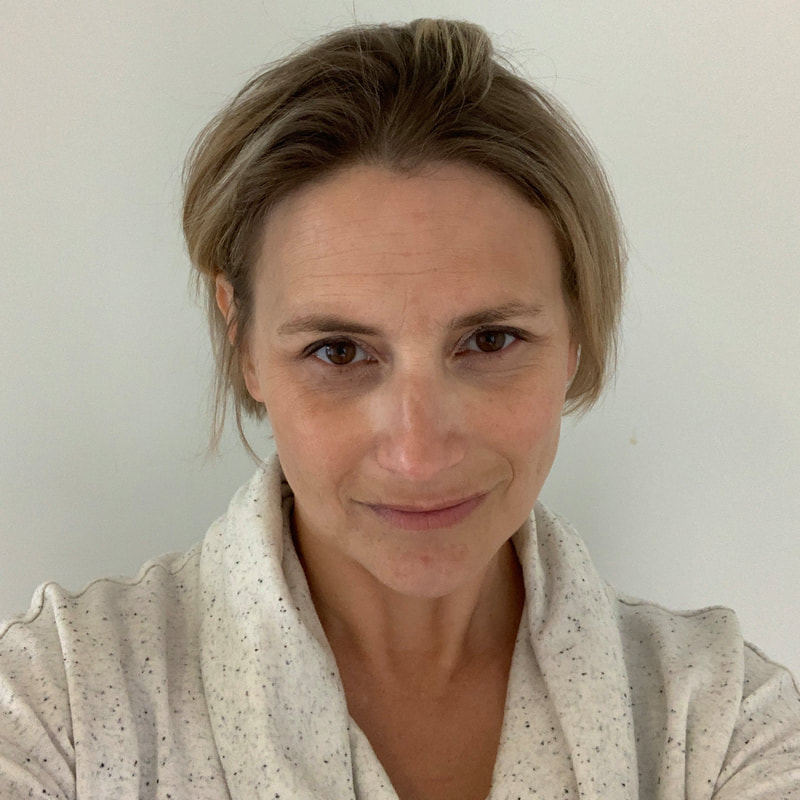|
A version of this review originally published on JEA's Diversity, Equity and Inclusion blog.  Gene Demby, NPR Code Switch co-host, records a live episode at the Skirball Center in Los Angeles on Oct. 6, 2017. The podcast gained national prominence in the wake of Black LIves Matter protests in 2020, when it shot up to #1 on Apple Podcasts and was featured in Oprah Magazine. Photo Credit: Kristin Taylor Gene Demby, NPR Code Switch co-host, records a live episode at the Skirball Center in Los Angeles on Oct. 6, 2017. The podcast gained national prominence in the wake of Black LIves Matter protests in 2020, when it shot up to #1 on Apple Podcasts and was featured in Oprah Magazine. Photo Credit: Kristin Taylor One of the key points in Zaretta Hammond's book Culturally Responsive Teaching and the Brain is that becoming a culturally responsive teacher means educating ourselves — immersing ourselves in diverse perspectives. One of my favorite ways to do this is to listen to podcasts hosted and produced by people too often marginalized in mainstream media. NPR’s Code Switch started as a blog, which I read regularly, so I was absolutely thrilled when it morphed into a podcast four years ago. The very first episode, “Can we talk about Whiteness?” debuted May 31, 2016, and I’ve been a devoted listener ever since. I was thrilled when they rebranded this year: their new tagline (“Race. In Your Face”) reflects an unflinching willingness to ask those hard questions and talk about them openly. Co-hosts Gene Demby and Shereen Marisol Meraji blend stellar reporting with personal anecdotes; they have an easy camaraderie that gives the podcast warmth and humor, even when they are exploring some of the darkest and most troubling topics. They are experts, yet they freely admit questions about race and identity aren’t easily answered — one of the most common refrains on the show is “It’s complicated.” The “Code Switch fam,” who they shout out every episode, bring a wealth of perspectives and experiences, which is evident in the tremendous diversity of topics they tackle — from veteran reporter Karen Grigsby Bates’ episode “What’s in a Karen?” about the Karens (or Becky’s or Miss Ann’s) throughout history, to Alyssa Jeong Perry’s episode “One Korean American’s Reckoning” about the stereotype of the “quiet, submissive Asian” versus the actual history of Asian American resistance. They talk about immigration, Native treaty rights, Black resistance, Latinx identity, race in politics, how we use words — nothing is off limits, and everything is grounded in authentic voices and solid journalism. I wasn’t surprised when I learned a college professor created a course around this podcast; I have learned more about race, ethnicity and identity from listening the past four years than I ever did in college. I’ve been using episodes of the podcast in my high school journalism and English classrooms from the start. I know teachers in more conservative parts of the country are facing a lot of pressure and may not be able to do the same — I’ve heard stories of administrators telling teachers they aren’t even allowed to talk about Black Lives Matter due to parent backlash — but if you can’t use it in class, I encourage you to at least listen to it for yourself. Whether you identify as white, a person of color (a contentious question they explored recently in “Is it time to say R.I.P. to POC?”) or as a member of any marginalized group, this podcast provides insight into so many aspects of identity and asks such important questions that I believe there is something there for everyone. In addition to these longer episodes, they do shorter “Word Watch” episodes that are fascinating — some as audio and others as blog posts. A few examples of terms they cover: white trash, namaste, nappy, ghetto and white tears. 10 Episodes to get you startedIf you’re sold, you may be asking yourself where to start. You could certainly start from the beginning, but that would take more time than any teacher has right now, so here’s a list of some of my favorite episodes to get a taste of the show.
0 Comments
Leave a Reply. |
About“And though she be but little, she is fierce!” -A Midsummer Night’s Dream Archives
December 2020
Categories
All
|

 RSS Feed
RSS Feed